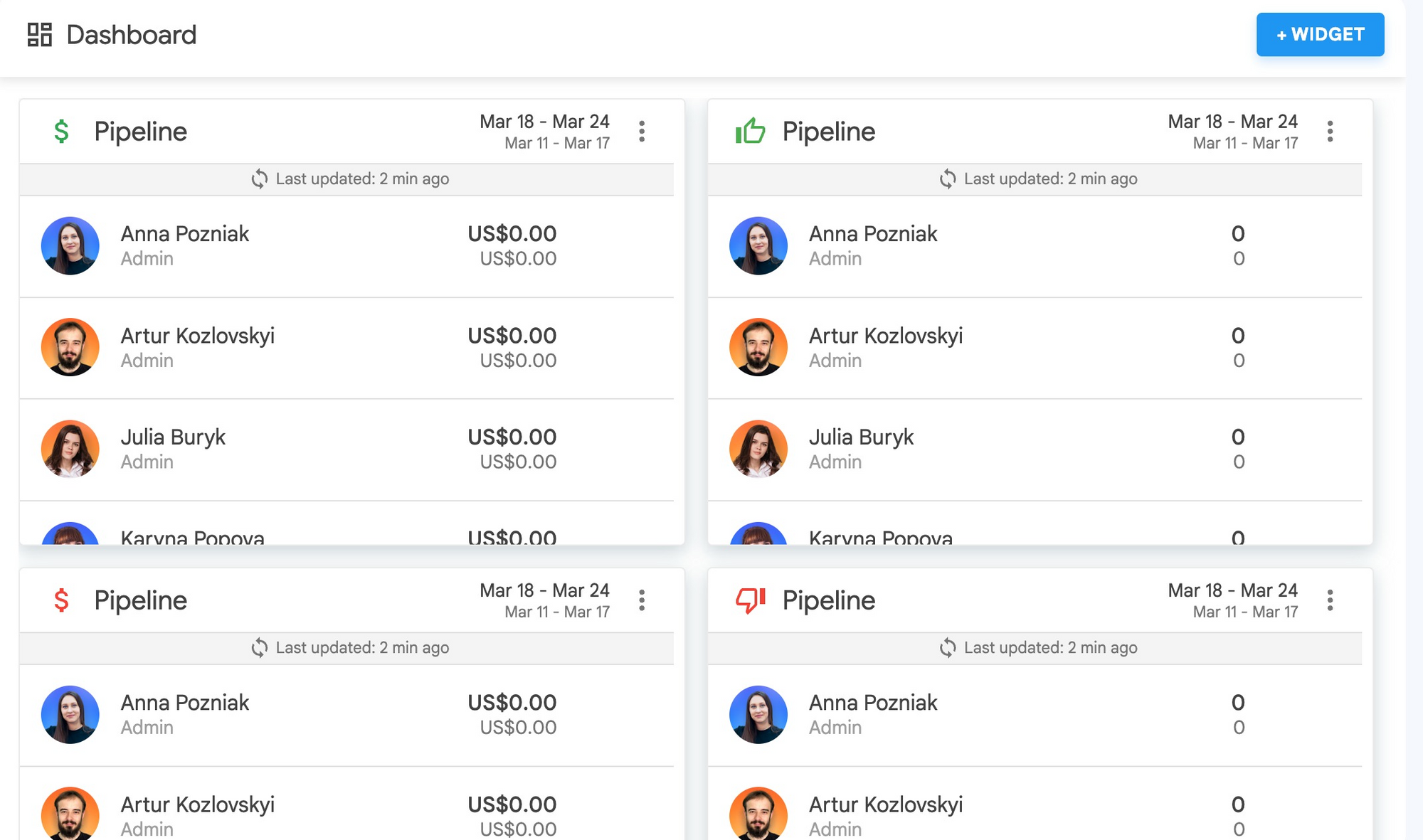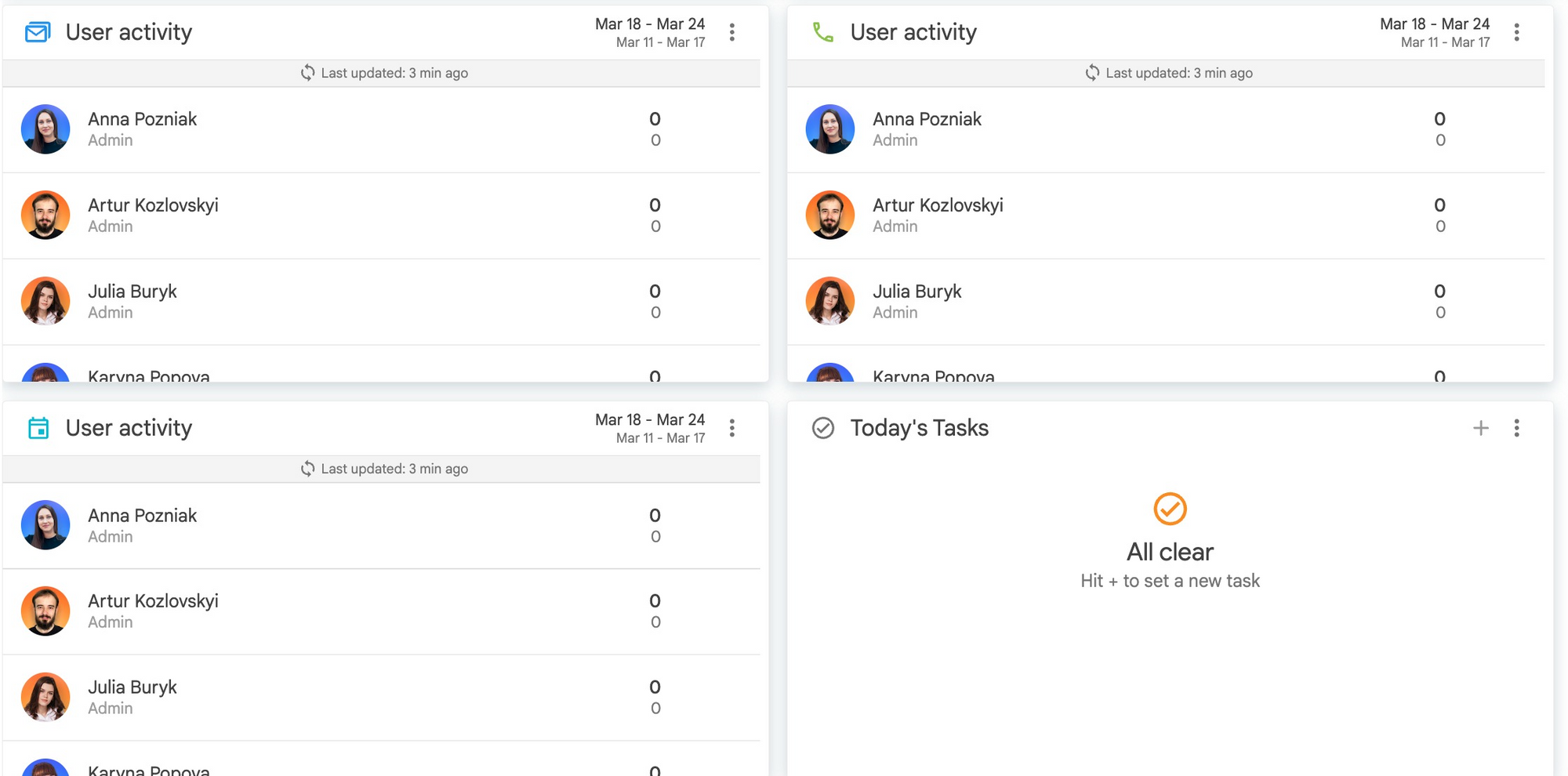You’re wondering what a CRM dashboard is and how to make the most of it?
Look no further!
This ultimate guide to CRM dashboards provides you with the information you need about what you should put on your dashboard.
By the end of this guide, you should be able to configure your CRM dashboard to meet your business's needs best, allowing you to make the most of your customer relationship management strategy.
We hope this ultimate guide to CRM dashboards helps you get started with the perfect CRM dashboard for your business. Let's dive in and learn more about CRM dashboards and how they can help you stay on top of your CRM goals!
What is a CRM dashboard?
A CRM dashboard is part of your CRM interface. It gives you access to real-time data about your business's ongoing activities and state.
Often a CRM dashboard will have various graphs highlighting essential statistics in the business. However, you can customise a CRM dashboard to fit the needs of the business better.
Why do you need a CRM dashboard?
CRM dashboards transform how you do business. They allow management to keep a finger on the company's pulse, and employees can quickly access the data necessary to perform their jobs most efficiently.
The perks of having a CRM dashboard are…
- Offer insight into your marketing or sales pipelines in a way that doesn't require navigation through the suite
- Keep your employees up-to-date on important metrics without needing to email a report or hold a meeting
- Simplify the business's distribution process, allowing all employees and stakeholders to access required data readily
Who uses CRM dashboards?
CRM dashboards are vital for sales, marketing, support teams, and C-level management.
However these employees use the dashboard differently. Sales teams might use the task checklist dashboard. In contrast, marketing teams might have a graph visualising the performance of the latest marketing campaign.
Department heads can also display team activity on their dashboard. This helps assess the team's workload and the results they’re achieving.
C-level management might have graphs visualising the total costs and revenue the business is incurring or a graph that visualises the progress of a project.
Key elements and features of a good CRM dashboard
If the information in your CRM dashboard isn’t relevant to your daily processes, it simply clutters your screen. This takes attention away from things that matter.
Some features that a good CRM dashboard should have are…
Data tracking
A good CRM dashboard should allow you to track various forms of consumer data. Some platforms even go as far as integrating data from social media into the dashboard.
Data tracking is beneficial for marketing, sales and customer success teams as they allow them to track their clientele's interactions with the company on the fly.
Another benefit that data tracking provides is the ability to see how customers react to marketing campaigns, newsletters, or running promotions.

Forecasting capabilities
Turning forecasts into visual graphs in the dashboard makes it significantly easier for teams to meet short-term and long-term goals.
However, some CRM dashboards take this further, allowing you to forecast industry trends.
For example, suppose your company has a few primary industries that encompass most of its customers. A CRM dashboard can track the market conditions of these industries and deliver updates and forecasts straight to the first screen you see on your CRM.
Collaboration-enabling features
For a dashboard to be the most effective, it must also be accessible to multiple users within the same workspace. This saves time since every user doesn't have to set up their dashboard manually. They can just select a dashboard from the set list created and updated by team leaders.
Sharing these dashboards keeps all departments up-to-date on what each one is doing. For example, C-suite managers can track the marketing campaign's performances. The sales department can keep track of customer success interactions and goals.

Overview of automated workflows
If your sales CRM offers the ability to create automated workflows, your CRM dashboard should offer you the ability to track the performance of these automations.
This is useful for multiple reasons…
- It provides the ability to identify if any automated workflow has run into issues, or stopped altogether when it wasn’t meant to due to technical issues.
- It lets you see how far along automated sequences your leads are. For example, a display showing you when a lead has reached the final steps of the automated sequence, to give sales representatives a heads-up that they will have to contact them soon.
- It lets you track the effectiveness of your automated workflows, allowing you to identify areas for improvement.
Overview of deal owners
Team leaders and C-level managers, you’ll love this! An overview of who from your sales teams owns how many deals and which deals is incredible when tracking your sales team's performance.
Notice someone’s deal numbers staying the same for a while? They probably ran into a bottleneck and need your help clearing it up.
See someone with a staggeringly low amount of deals? Maybe they need cold outreach coaching.

Ease of usage
This isn’t a function per se. It's definitely an essential element of a CRM dashboard that shouldn’t be overlooked. Using and navigating your dashboard, which is something that really shouldn’t be used or navigated past the set-up stages, should come to you as second nature.
A CRM dashboard helps interpret data provided at a glance, without spending too much time figuring out what’s what or reading graphs.
Not to mention, a good CRM dashboard should be as easy to configure as it should be to use.
What to include in your CRM dashboard
It goes without saying that your CRM dashboard has to include one of the key elements mentioned above. However, your CRM dashboard should contain other elements depending on which role you occupy in the company.
Sales teams should have the following elements added to their CRM dashboard…
- Sales pipeline tracking
- Sales performance tracking
- New leads
- Closed deals
- User activity tracking, showing emails sent and received, recent calls, and meetings
- Goal report tracking, displaying how close a salesperson is to reaching their sales goal
Marketing teams should have the following CRM dashboard elements…
- Email campaign performance tracking
- Newsletter performance tracking
- Conversion tracking
Customer success and account managers, as well as any other retention-oriented role, should have a similar set of elements added to their CRM dashboard as sales teams. But, with the addition of customer satisfaction tracking, support ticket tracking, and customer retention (churn) tracking.
C-level management should utilise the reporting elements of the dashboard, depending on what that specific manager's X is in CXO.
For example, a CTO might have a support ticket tracking widget on their dashboard, while a CMO might have campaign performance tracking and conversion tracking added to theirs.
Congratulations! You've made it to the end of this comprehensive guide on CRM dashboards.
You should now have a good idea of the features and benefits of a CRM dashboard and how to get the most out of it. We hope this guide has been helpful to you.
If you'd like to take the next step, why not try NetHunt CRM?
Our excellent dashboard gives you a comprehensive and intuitive view of your customer relationships, helping you make better decisions and grow your business faster.
So why wait?
Give NetHunt CRM a try — the first 14 days are on us 👀
Table of Contents
Crack the sales formula with CRM Lab
Twice a month, receive actionable CRM content to your inbox.



